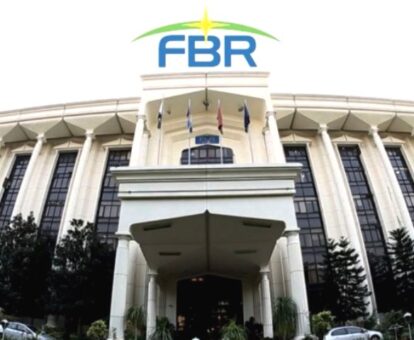ISLAMABAD, Monday – The Federal Board of Revenue (FBR) has released comprehensive guidelines, outlined in the Eleventh Schedule of the Income Tax Ordinance, 2001, for the computation of income tax specifically tailored for builders and developers.
These rules, applicable to projects undertaken under section 100D, aim to provide clarity and a structured framework for taxation in the real estate sector.
Key Provisions of the Eleventh Schedule:
1. Project-Based Taxation:
The income and tax payable are determined on a project-by-project basis, with rates specified in Rule 10. Tax liability for a project is calculated annually based on the rates provided.
2. Project Life and Registration:
The estimated project life for tax purposes is capped at three and a half years, with a maximum of four years for existing incomplete projects. Registration of projects is mandatory, and a builder or developer must electronically register a project on the FBR website by December 31, 2021, to avail benefits.
3. Certification Requirements:
Builders and developers must obtain and provide a certificate from the approving authority, map approving authority, or NESPAK. The certificate must include details such as total land area, covered area, saleable area, and the type of saleable area.
4. Advance Tax and Income Incorporation:
A builder or developer must pay advance tax equal to one-fourth of the tax liability for the year in four equal installments. There are restrictions on incorporating profits and gains in books of account, with excess profits subject to specific taxation.
5. Exemptions and Restrictions:
Builders and developers are exempted from withholding tax on specific transactions, such as the purchase of building materials (except steel and cement) and certain services. There are restrictions on changes in ownership patterns before project completion.
6. Definitions and Rates:
The Schedule provides detailed definitions for various terms, including the area, building, commencement, and completion of a project. Additionally, tax rates for builders and developers in different urban areas are specified in the schedule.
Implications and Significance:
The release of these detailed rules provides a clear regulatory framework for builders and developers operating in the real estate sector. It aims to ensure transparency, accountability, and proper taxation in an industry that has witnessed significant growth. The FBR emphasizes the importance of compliance with these rules to contribute to federal tax revenue.
It is crucial for builders, developers, and stakeholders in the real estate sector to familiarize themselves with these rules to ensure adherence and facilitate a smooth transition into the new taxation framework.
Disclaimer: This summary is for informational purposes only and should not be considered as professional advice. Readers are advised to refer to the official documents for accurate information.
